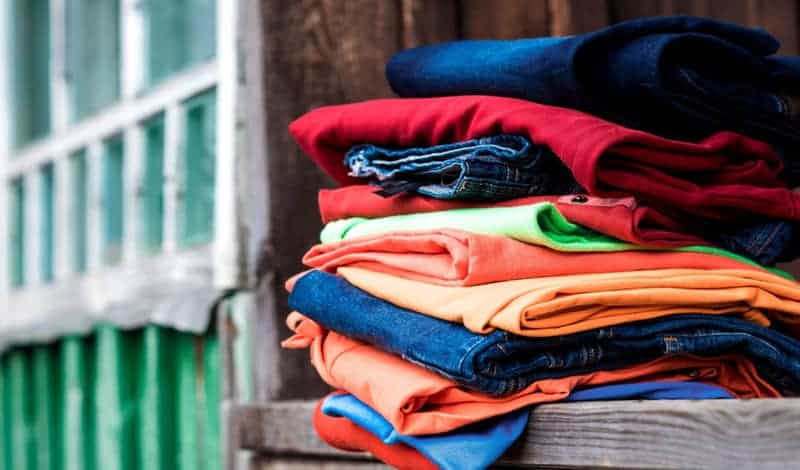Care of Family Clothing | Methods Of Storing Clothes (Home Economics)
What is clothing?
Any item we put on the body to add value, beautify, or protect it is referred to as clothing. Dresses, shoes, caps, jewelry, socks, and other items are all considered to be clothing.

Guidelines on proper storage and care of family clothing
- Make sure you have adequate storage for your clothing, such as a suitable closet or wardrobe, a box, a compartment, etc.
- As soon as a stain appears on cloth, try to remove it.
- Mend torn clothes before they tear beyond repair
- Wash your dirty clothes before storing them.
- use reliable hangers to hang your clothing.
- Before cleaning and storing clothing, take off any detachables and pins.
- Always keep the storage area tidy and clean.
- To keep cockroaches and other insects under control, store clothing in containers filled with camphor.
- Wash your socks and underwear once used.
[irp]
Methods of storing family clothes
The following options are available for storing family clothing:
Wardrobe or Closet
The easiest way to store clothing is to hang it on high-quality plastic hangers in a wardrobe. Some wardrobes have shelves for folded clothes, a section for hanging items, and fitting doors for storing bags and boxes on top. Clothes are kept from wrinkling and preserve their original form with the aid of a wardrobe.
Guidelines for Clothing Storage in the Closet/Wardrobe
- Consistently keep the closet clean.
- When hanging clothes, use high-quality plastic hangers. Avoid using hangers that are made of metal or iron.
- Do not keep dirty cloth with clean ones
- Avoid stuffing the closet full of clothing.
- Avoid hanging items made of loosely woven fabric, such as sweaters, as they may stretch out of shape.
- Protect your cloth from dust
Boxes/suitcases and bags
Using one of these items will shield your clothing from bugs, dust, light, and air.
Guidelines for Storing Clothes in Boxes
- Choose an appropriate box or bag for your clothing.
- Only put clean clothes in the storage.
- Before placing your clothing in the box, iron them.
- Carefully fold clothing before storing it and store it to avoid wrinkling.
- Completely seal the box to keep out dust.
Drawers and Shelves
Well-built drawers and shelves made of appropriate wood and finished well can be used to store clothing, including bulky wool jumpers.
Storage Rules for Drawers and Shelves
- Only put clean, dry clothes in storage.
- Carefully fold the clothing to prevent any wrinkles.
- To avoid crushing, pile the lighter clothing on top of the heavier ones.
- To repel insects, store camphor balls in the drawers.
Proper location to guidelines to store Accessories
Shoes
- Clean your shoes before storing them after wearing them
- Do not keep your shoes carelessly on the floor where they may collect dust and become challenging to clean.
- Before storing your shoes, repair any tears as soon as possible.
- To keep your shoes in shape, stuff them with fresh pieces of paper
- Arrange them on a shoe rack or shelf.
[irp]
Jewelry
- They should be kept in a small box or container with its interior lined with a soft fabric or cotton wool. This includes necklaces, earrings, bangles, and other types of jewelry.
- To prevent dust, keep the box closed at all times.
- Keep jewelry away from liquids like kerosene or water.
Socks and Gloves
- Before storing, make sure they are neat and dry.
- Fold and place in pairs in a closet nook or plastic bags.
Hats and caps
- Keep dust off of the head gear.
- To retain the crown’s shape, stuff it with fresh paper. Cover it with a plastic bag before storing it to keep dust out.
- To avoid compression, place in an appropriate location, such as the top of a flat surface.
Simple garment repair
- The technique of fixing clothing items is known as garment repair.
- For the following factors, clothing repair is essential:
- Proper clothing maintenance extends the life and usability of clothing.
- It improves the attractiveness of the wearer and the garments.
- The immediate repair of clothing stops any further damage.
- It helps to Save money that may have been spent on new clothing
- It keeps the closet organized.
Types of garment repair
Darning
Darning is a technique for patching up tiny holes and tiny tears in clothing. it entails weaving strong thread into the cloth that has been damaged. It can be done either by hand or by sewing machine.
[irp]
Guidelines for Darning
- Select a thread that is appropriate for the clothing in terms of color, texture, and thickness.
- Make sure to work on the correct side of the cloth
- Before darning, pinch or pull the tear’s edges together using a herringbone stitch.
- Make sure the darn fills in the tear or hole.
Patching
Patching is the technique of attaching a solid piece of cloth to worn-out fabric. Large holes or worn sections should be fixed because darning them is tough.
Guidelines for Patching
- Select a fabric that is similar to the material in terms of color, texture, pattern, and condition.
- For the patching, use a coordinating thread.
- Make the patching strong, smooth, and neat.
- The patch needs to be big enough to cover both the worn area around the hole as well as the hole itself.
Lost or Worn Fastenings
Missing or damaged fasteners, such as buttons and buttonholes.
- Use buttonhole stitches to cover worn buttonholes to repair them.
- Fastenings that are loose or missing should be tightened or replaced right away.
Undone Hems and Loose or Split Seams
- Use a matching thread to tack the seam or hem.
- For split seams, use a running stitch or backstitch, and for the hem, a hemming stitch.
Cut or Loosen Elastic Band
- From the wrong side, unpick a few stitches in the casing for the elastic.
- Remove the previous elastic.
- Pulling through the outer layer with an appropriate safety pin, replace the elastic with new one.
- Restitch the casing neatly after carefully sewing the elastic’s ends together.



